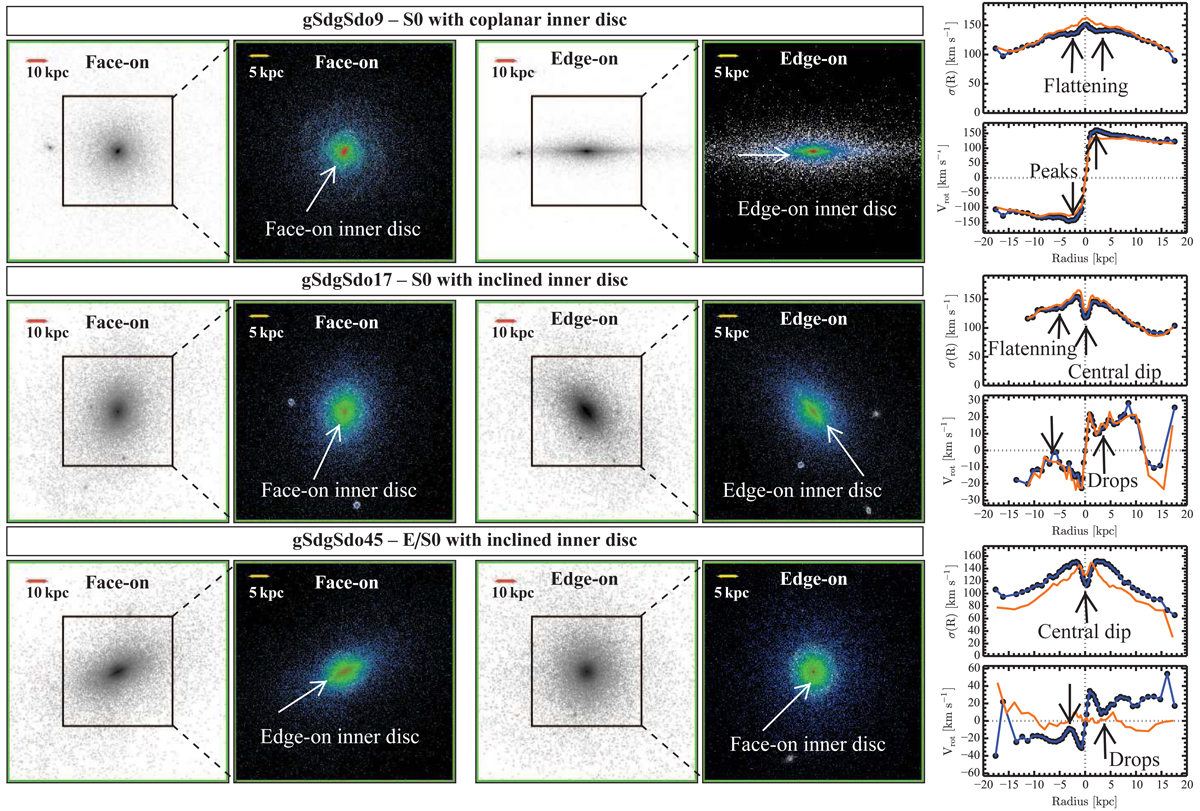Fig. 12.

V-band face-on and edge-on images of major-merger S0-like remnants hosting visible young embedded inner discs at their centres. First and third columns: V-band face-on and edge-on images of each remnant for a FoV of 100 × 100 kpc2, using a logarithmic grayscale that emphasises the flat structure of the inner discs at the centre of the galaxies. Second and fourth columns: zooms into the central 50 × 50 kpc2 of the V-band images, using a logarithmic staircase colour scale in which the green level follows the inner disc structure. No smoothing has been applied to any frames. The inner disc of model gSdgSdo9 is co-planar with the main galaxy disc, whereas those in models gSdgSdo17 and gSdgSdo45 are highly inclined with respect to the main disc (they are more noticeable when seen edge on). Fifth column: rotation velocity (Vrot) and velocity dispersion (σ) radial profiles of each remnant, both weighted by mass (orange solid line) and by V-band luminosity (blue circles). The inner disc in gSdgSdo9 is co-rotating with the main disc, because Vrot exhibits strong peaks within the innermost ~5 kpc and σ becomes shallower in that region (see the luminosity-weighted profile). Those in gSdgSdo17 and gSdgSdo45 are counter-rotating, as shown by the steep decrements in Vrot between R ~ 2 and R ~ 5–10 kpc, where the inner discs are. The σ dips at R ≲ 1 kpc in these two last cases are unrelated to these counter-rotating inner discs. They point to even smaller nuclear discs, which co-rotate with the main galaxy disc (notice the strong co-rotation observed at R ≲ 1 kpc in both cases). Any sub-structure with such small sizes are probably affected by the softening of the simulations. For more details on the images, see the caption of Fig. 5.
Current usage metrics show cumulative count of Article Views (full-text article views including HTML views, PDF and ePub downloads, according to the available data) and Abstracts Views on Vision4Press platform.
Data correspond to usage on the plateform after 2015. The current usage metrics is available 48-96 hours after online publication and is updated daily on week days.
Initial download of the metrics may take a while.


